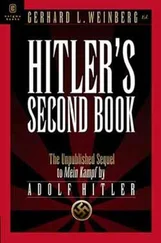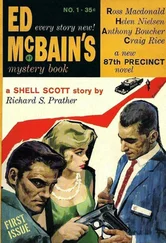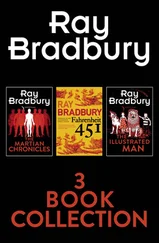Ray Baker - Boys' Second Book of Inventions
Здесь есть возможность читать онлайн «Ray Baker - Boys' Second Book of Inventions» — ознакомительный отрывок электронной книги совершенно бесплатно, а после прочтения отрывка купить полную версию. В некоторых случаях можно слушать аудио, скачать через торрент в формате fb2 и присутствует краткое содержание. Издательство: Иностранный паблик, Жанр: foreign_antique, foreign_prose, foreign_children, на английском языке. Описание произведения, (предисловие) а так же отзывы посетителей доступны на портале библиотеки ЛибКат.
- Название:Boys' Second Book of Inventions
- Автор:
- Издательство:Иностранный паблик
- Жанр:
- Год:неизвестен
- ISBN:нет данных
- Рейтинг книги:4 / 5. Голосов: 1
-
Избранное:Добавить в избранное
- Отзывы:
-
Ваша оценка:
- 80
- 1
- 2
- 3
- 4
- 5
Boys' Second Book of Inventions: краткое содержание, описание и аннотация
Предлагаем к чтению аннотацию, описание, краткое содержание или предисловие (зависит от того, что написал сам автор книги «Boys' Second Book of Inventions»). Если вы не нашли необходимую информацию о книге — напишите в комментариях, мы постараемся отыскать её.
Boys' Second Book of Inventions — читать онлайн ознакомительный отрывок
Ниже представлен текст книги, разбитый по страницам. Система сохранения места последней прочитанной страницы, позволяет с удобством читать онлайн бесплатно книгу «Boys' Second Book of Inventions», без необходимости каждый раз заново искать на чём Вы остановились. Поставьте закладку, и сможете в любой момент перейти на страницу, на которой закончили чтение.
Интервал:
Закладка:
Ray Stannard Baker
Boys' Second Book of Inventions
CHAPTER I
THE MIRACLE OF RADIUM
No substance ever discovered better deserves the term "Miracle of Science," given it by a famous English experimenter, than radium. Here is a little pinch of white powder that looks much like common table salt. It is one of many similar pinches sealed in little glass tubes and owned by Professor Curie, of Paris. If you should find one of these little tubes in the street you would think it hardly worth carrying away, and yet many a one of them could not be bought for a small fortune. For all the radium in the world to-day could be heaped on a single table-spoon; a pound of it would be worth nearly a million dollars, or more than three thousand times its weight in pure gold.
Professor and Madame Curie, who discovered radium, now possess the largest amount of any one, but there are small quantities in the hands of English and German scientists, and perhaps a dozen specimens in America, one owned by the American Museum of Natural History and several by Mr. W. J. Hammer, of New York, who was the first American to experiment with the rare and precious substance.
And perhaps it is just as well, at first, not to have too much radium, for besides being wonderful it is also dangerous. If a pound or two could be gathered in a mass it would kill every one who came within its influence. People might go up and even handle the white powder without at the moment feeling any ill-effects, but in a week or two the mysterious and dreadful radium influence would begin to take effect. Slowly the victim's skin would peel off, his body would become one great sore, he would fall blind, and finally die of paralysis and congestion of the spinal cord. Even the small quantities now in hand have severely burned the experimenters. Professor Curie himself has a number of bad scars on his hands and arms due to ulcers caused by handling radium. And Professor Becquerel, in journeying to London, carried in his waistcoat pocket a small tube of radium to be used in a lecture there. Nothing happened at the time, but about two weeks later Professor Becquerel observed that the skin under his pocket was beginning to redden and fall away, and finally a deep and painful sore formed there and remained for weeks before healing.
It is just as well, therefore, that scientists learn more about radium and how to handle and control it before too much is manufactured.
But the cost and danger of radium are only two of its least extraordinary features. Seen in the daylight radium is a commonplace white powder, but in the dark it glows like live fire, and the purer it is the more it glows. I held for a moment one of Mr. Hammer's radium tubes, and, the lights being turned off, it seemed like a live coal burning there in my hand, and yet I felt no sensation of heat. But radium really does give off heat as well as light – and gives it off continually without losing appreciable weight . And that is what seems to scientists a miracle. Imagine a coal which should burn day in and day out for hundreds of years, always bright, always giving off heat and light, and yet not growing any smaller, not turning to ashes. That is the almost unbelievable property of radium. Professor Curie has specimens which have thus been radiating light and heat for several years, with practically no loss of weight; and no small amount of light and heat either. Professor Curie has found that a given quantity of radium will melt its own weight of ice every hour, and continue doing so practically for ever. One of his associates has calculated that a fixed quantity of radium, after throwing out heat for 1,000,000,000 years, would have lost only one-millionth part of its bulk.
What is the reason for these extraordinary properties? Is it not "perpetual motion"? All the great scientists of the world have been trying in vain to answer these questions. Several theories have been advanced, of which I shall speak later, but none seems a satisfactory explanation. When we know more of radium perhaps we shall be better prepared to say what it really is, and we may have to unlearn many of the great principles of physics and chemistry which were seemingly settled for all time. Radium would seem, indeed, to defy the very law of the conservation of energy.
The practical mind at once sees radium in use as a new source of heat and light for mankind, a furnace that would never have to be fed or cleaned, a lamp that would glow perpetually – and the time may really come, the inventor having taken hold of the wonder that the scientist has produced, when many practical applications of the new element may be devised. At present, however, the scarcity and cost and danger of radium will keep it in the hands of the experimenter.
Another astonishing property of radium is its power of communicating some of its strange qualities to certain substances brought within its influence. Mr. Hammer kept his radium tubes for a time in a pasteboard box. This being broken, he removed the tubes and threw the pasteboard aside. Several days later, having occasion to turn off the lights in the laboratory, he found that the discarded box was glowing there in the dark. It had taken up some of the rays from the radium. Nearly everything that comes in contact with radium thus becomes "radio-active" – even the experimenter's clothes and hands, so that delicate instruments are disturbed by the invisible shine of the experimenter. Photographs can be taken with radium; it also makes the air around it a better conductor of electricity. And still more marvellous, besides being an agency for the destruction of life, as I shall show later, it can actually be used in other ways to prolong life, and the future may show many wonderful uses for it in the treatment of disease. Already, in Paris, several cases of lupus have been cured with it, and there is evidence that it will help to restore sight in certain cases of blindness. I held a tube of radium to my closed eye and was conscious of the sensation of light; the same sensation was present when the tube was held to my temple, thus showing that the radium has an effect on the optic nerve. A little blind girl in New York, who had never had the sensation of light, began to see a little after one treatment with radium, and experiments are still going on, but cautiously, for fear that injuries may result.
We now come to the fascinating story of the discovery and manufacture of radium. It has long been known that certain substances are phosphorescent; that is, under the proper conditions they glow without apparent heat. Everybody has seen "fox-fire" in the damp and decaying woods – a cold light which scientists have never been able to explain.
To M. Henri Becquerel of the French Institute is generally given the credit for having begun the real study of radio-activity, although, as in every great discovery and invention, many other scientists and practical electricians had paved the way by their investigations. In 1896 M. Becquerel was conducting some experiments with various phosphorescent substances. He exposed some salts of the metal uranium to the sunlight until they became phosphorescent, and then tried their effect upon a photographic plate.
It rained, and he put the plate away in a drawer for several days. When he developed it he was surprised to find on it a better image than sunlight would have made. And thus, by a sort of accident, he led up to the discovery of the Becquerel rays, so called.
Uranium is extracted from a metal or ore called uranite by mineralogists, and popularly known as pitch-blende. Every young college student who has studied geology or chemistry has heard of pitch-blende.
Читать дальшеИнтервал:
Закладка:
Похожие книги на «Boys' Second Book of Inventions»
Представляем Вашему вниманию похожие книги на «Boys' Second Book of Inventions» списком для выбора. Мы отобрали схожую по названию и смыслу литературу в надежде предоставить читателям больше вариантов отыскать новые, интересные, ещё непрочитанные произведения.
Обсуждение, отзывы о книге «Boys' Second Book of Inventions» и просто собственные мнения читателей. Оставьте ваши комментарии, напишите, что Вы думаете о произведении, его смысле или главных героях. Укажите что конкретно понравилось, а что нет, и почему Вы так считаете.












